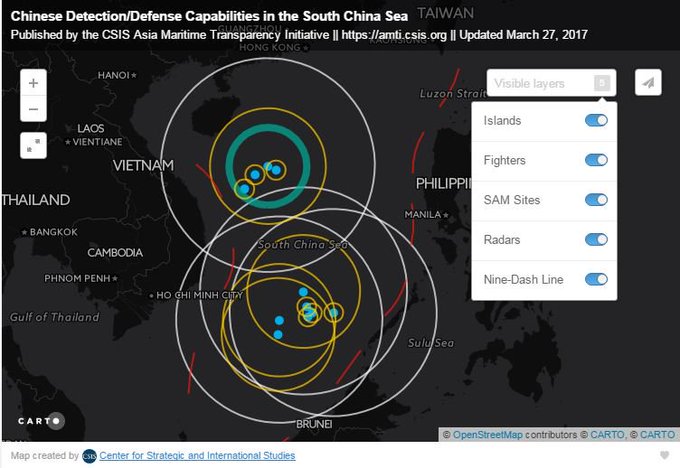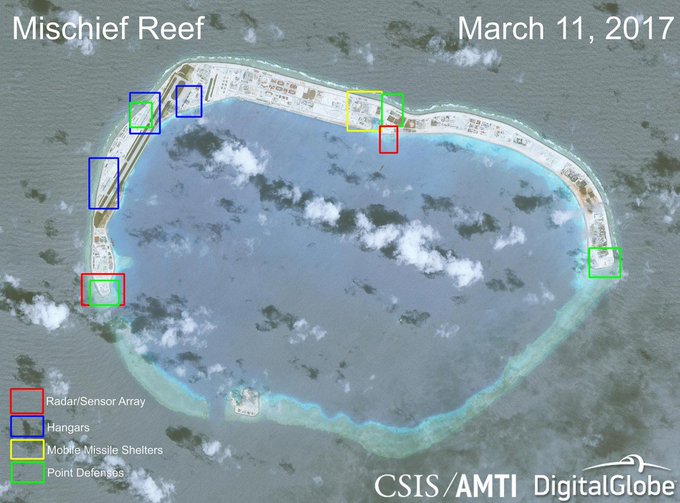BY THOMAS E. RICKS
China has ramped up its investment in developing quantum technologies, but few understand the impacts of losing this modern-day space race.
Seventy-five years ago, the United States and imperial Japanese navies (IJN) faced off at the Battle of Midway, an engagement that would prove decisive in determining the outcome of World War II in the Pacific.
The U.S. navy (USN) had devoted tremendous intelligence resources to detecting when and where such a battle might occur.
They had long known that the IJN’s primary strategic objective was to lure the USN into a decisive fight.
The IJN planned a surprise attack.
Why then did the USN take such a risk?
The USN knew it had two critical advantages despite being outgunned and likely years behind in naval readiness than their Japanese counterparts.
The USN knew it had two critical advantages despite being outgunned and likely years behind in naval readiness than their Japanese counterparts.
First, it had broken its adversary’s codes and unlocked access to all of imperial Japan’s communications.
They knew precisely when and where an attack would take place.
Second, the USN had outclassed its adversary’s fighting platforms with two new and revolutionary technologies, radar and sonar.
Therefore, not only did the USN know precisely when and where to place its forces to counter the IJN punch, but it also maintained better situational awareness throughout the fight.
Had the United States not recognized the strategic importance these technologies would play throughout the war it may have cost it victory at Midway and many other points along the way.
 U.S. navy aircraft on the deck of the USS Enterprise on the first day of the Battle of Midway.
U.S. navy aircraft on the deck of the USS Enterprise on the first day of the Battle of Midway.

How does the Battle of Midway relate to the ongoing race to develop quantum technologies? Quantum technologies are those that make use of some of the properties of quantum mechanics. Features such as quantum entanglement, quantum superposition, and quantum tunneling can be applied in new forms of computation, sensing, and cryptography.
Many are convinced that whoever masters this esoteric field will gain a similar dominance both in codebreaking and advanced sensors.
These advantages will tip scales both in the ongoing cyber war being carried out daily over the global internet and in future state-on-state combat.
Given these risks, China’s recent announcement of a $10 billion, four million square foot national quantum laboratory in Hefei should raise alarms.
Given these risks, China’s recent announcement of a $10 billion, four million square foot national quantum laboratory in Hefei should raise alarms.
Having already demonstrated a head-start in a handful of quantum technology applications — such as its launch of the Micius satellite, the first satellite-to-ground quantum network, and China’s claimed engineering of a quantum radar capable of detecting current stealth technologies — China has proven it wants to maintain its advantage.
These achievements combined with the massive investment by the Chinese government in quantum research should be a wake-up call to policy-makers and military leaders alike.
China’s increased spending and demonstrated advances in developing quantum technologies will enable advantages both commercially, and militarily, for a handful of reasons.
China’s increased spending and demonstrated advances in developing quantum technologies will enable advantages both commercially, and militarily, for a handful of reasons.
The most concerning advantage relates to codebreaking.
Today, communication networks pass digital information over public infrastructures, such as fiber optic pathways and wireless airwaves, using encryption to prevent eavesdroppers from reading the content of the message traffic.
The only thing stopping eavesdroppers from decrypting this traffic is the mathematical complexity of doing so.
Quantum computers will have the ability to crack these codes in far less time than today’s most advanced conventional computers.
Furthermore, as quantum computers make linear gains in computational power, they will exponentially decrease the time it takes to break current means of encryption.
Conversely, just as quantum technologies can be used to decrypt traditional security measures, it also can protect information in sophisticated new quantum communication channels.
Conversely, just as quantum technologies can be used to decrypt traditional security measures, it also can protect information in sophisticated new quantum communication channels.
One of the more pervasive concerns of relying on public infrastructure to communicate sensitive information comes from eavesdroppers.
Man-in-the-middle attacks allow eavesdroppers to place sensors along public communication pathways to copy all data passing through these channels and attempt to decrypt it either in real-time or later through brute-force.
Today, traditional networks have no reliable means to detect when these types of listening apparatus are emplaced.
Quantum technologies, by design, detect changes at the smallest of scales.
The extreme sensitivity of quantum technologies enables them to detect anomalies such as when an eavesdropper attempts to copy or siphon off data.
China has already tested a 2,000km long quantum communication pathway from Beijing to Shanghai that employs this powerful new means of detecting man-in-the-middle eavesdroppers.
They have already begun to defend their most sensitive networks.
If we return to the lessons learned from the Battle of Midway, the USN realized early on that having better sensors meant providing military leaders better situational awareness in tactical engagements.
If we return to the lessons learned from the Battle of Midway, the USN realized early on that having better sensors meant providing military leaders better situational awareness in tactical engagements.
The rise of quantum technologies that enhance sensing will also dramatically change the landscape of military technologies in coming years.
Quantum metrology technologies enable measurements of minute changes such as gravity upon subatomic particles and other characteristic changes that occur at atomic scales.
Developments in this arena will have profound effects on a variety of sensors.
China claims that it has already created a new form of quantum radar capable of defeating the electromagnetic stealth technologies employed in the $1 trillion F-35 program.
This would render much of the strategic investments sunk into this platform tragically outdated and call into question the future viability of this already controversial program.
The announced quantum information sciences laboratory in Hefei would also focus on the development of quantum metrology and appears set to build upon China’s early claims regarding quantum radar successes.
China has demonstrated it wishes to maintain its first mover advantage in this field.
China has demonstrated it wishes to maintain its first mover advantage in this field.
Given this, what should policy-makers, military leaders, and commercial decision-makers do?
Just as previous world leaders have made calls for increased scientific spending to bolster national security interests, leaders today must recognize the changing threat landscape imposed by quantum technologies and put some skin in the game.
To produce a profound increase in opportunities in this field someone must provide incentives for the next generation of researchers and developers.
The free market may not be enough.
Recently the U.S. House Science Committee voiced concerns that the United States was falling behind countries such as China that are ramping up research and development in this area.
As policymakers consider what technologies will give their societies and militaries distinct advantages — it is evident quantum technologies should be near the top of their list.
As policymakers consider what technologies will give their societies and militaries distinct advantages — it is evident quantum technologies should be near the top of their list.
The value proposition is clear.
Quantum technologies enable better access to, and protection of, quality information.
Policy and decision makers live and die by intelligence.
Just as nations trembled at the prospect of another country owning the ultimate high ground — space — so too should they worry about who dominates the development and application of quantum technologies.
Today, China has the high ground in quantum technologies.


